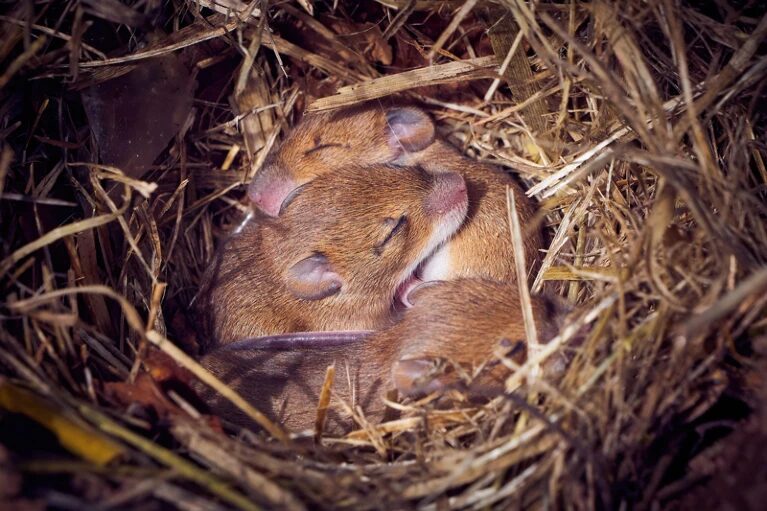
Researchers have made eggs from the cells of male mice — and showed that, once fertilized and implanted into female mice, the eggs can develop into seemingly healthy, fertile offspring.
The approach, announced on 8 March at the Third International Summit on Human Genome Editing in London, has not yet been published and is a long way from being used in humans. But it is an early proof-of-concept for a technique that raises the possibility of a way to treat some causes of infertility — or even allow for single-parent embryos. "This is a significant advance with significant potential applications," says Keith Latham, a developmental biologist at Michigan State University in East Lansing.
Researchers have been working towards this feat for years. In 2018, one team reported using embryonic stem cells made from sperm or eggs to generate pups with either two fathers or two mothers. The pups with two mothers survived to adulthood and were fertile; those with two fathers lived for only a few days1.
In 2020, a team led by developmental biologist Katsuhiko Hayashi, now at Osaka University in Japan, described the genetic changes necessary for cells to mature into eggs in a lab dish2. And in 2021, the same researchers demonstrated that they could reconstruct the environment of mouse ovaries to grow eggs that produce healthy offspring3.
With these tools in hand, Hayashi and his colleagues embarked on a project to create eggs using cells taken from an adult male mouse. They reprogrammed these to create stem-cell-like induced pluripotent stem cells. The team grew these cells in culture until some of them had spontaneously lost their Y chromosomes. (As in humans, the cells of male mice typically contain one X and one Y chromosome.) They then treated the cells with a compound called reversine, which can promote errors in how chromosomes are distributed during cell division, and looked for cells that were chromosomally female, with two copies of the X chromosome.
From there, the team provided the induced pluripotent stem cells with the genetic signals needed to form immature eggs. They then fertilized the eggs using mouse sperm and transferred the resulting embryos into the uterus of a female mouse.
The survival rate was low. Out of 630 transferred embryos, only 7 developed into pups. But the pups grew normally and were fertile as adults, Hayashi said at the meeting.
Early days
The technique is a long way from any kind of medical application. "There are big differences between a mouse and the human," Hayashi said. Such differences often complicate efforts to translate discoveries in reproductive and stem-cell biology from mice to the clinic.
In particular, Hayashi says that his team will need to carefully characterize the pups from the experiment, to look for any ways in which they differ from those bred using conventional methods.
It will also be interesting to look at whether the 'epigenetic' chemical modifications to DNA that can influence gene activity are preserved properly in the eggs derived from male cells, says Fan Guo, a reproductive epigeneticist at the Chinese Academy of Sciences Institute of Zoology in Beijing, who calls Hayashi's results "illuminating". Epigenetic marks on DNA can influence development in the offspring well beyond the embryo stage.
Another concern is that performing the same technique with human cells might require researchers to grow the egg cells in the laboratory for longer than was necessary with mouse cells, says Mitinori Saitou, a developmental biologist at Kyoto University in Japan who collaborated with Hayashi on the work. "If the culture period becomes longer, then both genetic and epigenetic abnormalities can accumulate," he told the conference. "The shorter the better."
Latham says that even if the approach is feasible in humans, researchers will need to make it more efficient and practical by increasing the proportion of embryos that yield offspring. "If you're going to apply this in humans, you really want to err on the side of safety, caution and efficiency," he says.
But if these hurdles are crossed, Hayashi's chromosomal-engineering approach could one day provide a treatment for some forms of infertility caused by sex-chromosomal conditions such as Turner's syndrome, in which women lack part or all of one of their X chromosomes.
The ramifications of Hayashi's work could also take human reproduction into new territory, says bioethicist Tetsuya Ishii at Hokkaido University in Sapporo, Japan. If applied to humans, such research might help male couples to have biological children together, with the aid of surrogate mothers, he says. "It also suggests that a single man could have a biological child," he says, "in the far future."
Such applications will require more than technical refinement of a biological method, said Hayashi, but also a broader societal discussion about the ethics and implications of implementing them: "I don't know whether this kind of technology can really adapt to human society."
doi: https://doi.org/10.1038/d41586-023-00717-7
References
- Li, Z.-K. et al. Cell Stem Cell 23, 665-676 (2018).Article PubMed Google Scholar
- Hamazaki, N. et al. Nature 589, 264-269 (2021).Article PubMed Google Scholar
- Yoshino, T. et al. Science 373, abe0237 (2021).Article Google Scholar



Comment: We're one step closer to the complete eradication of women.